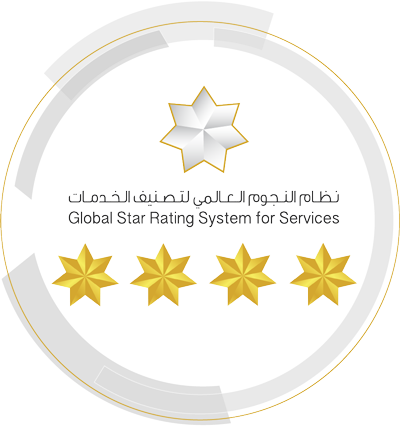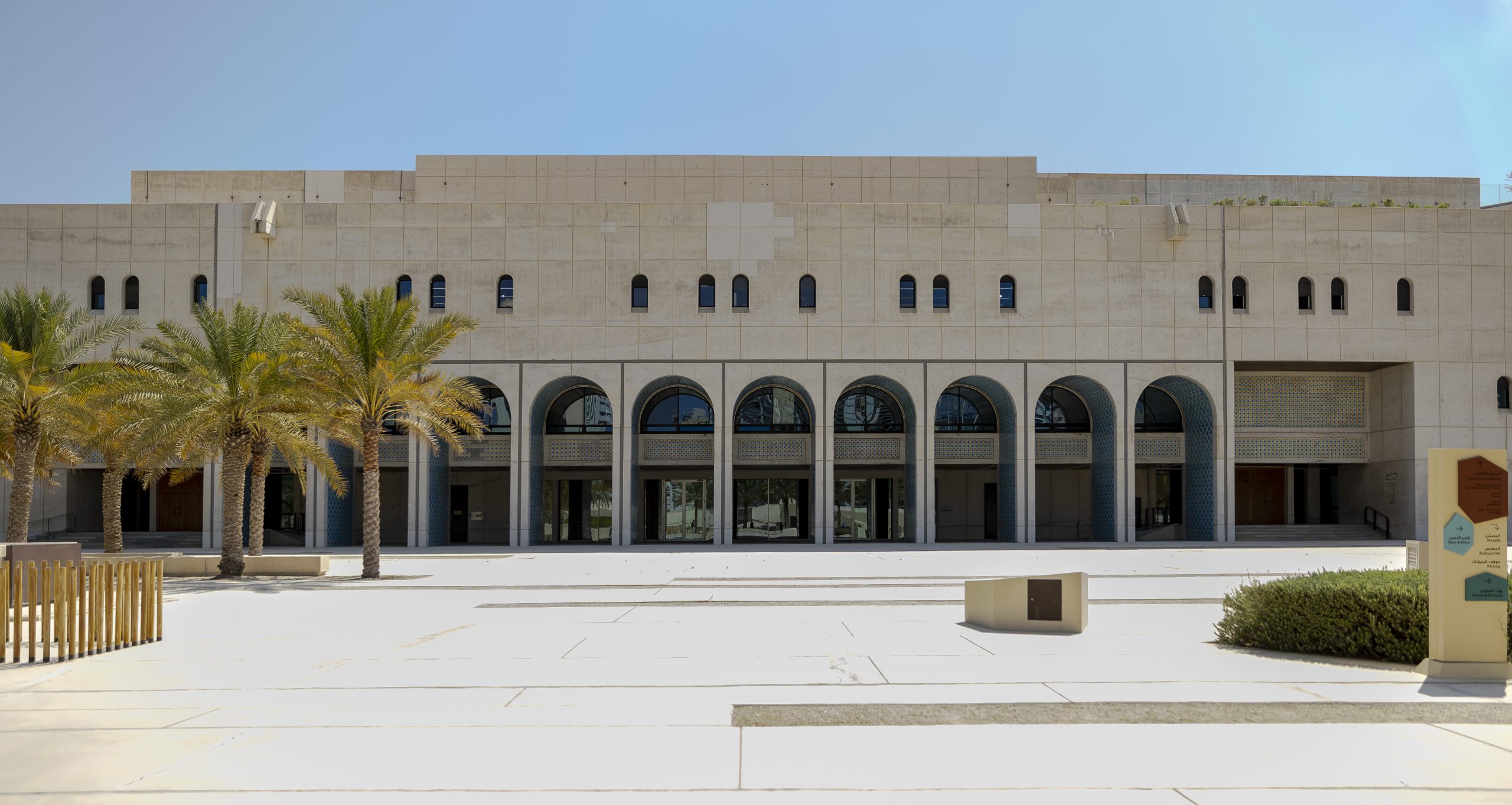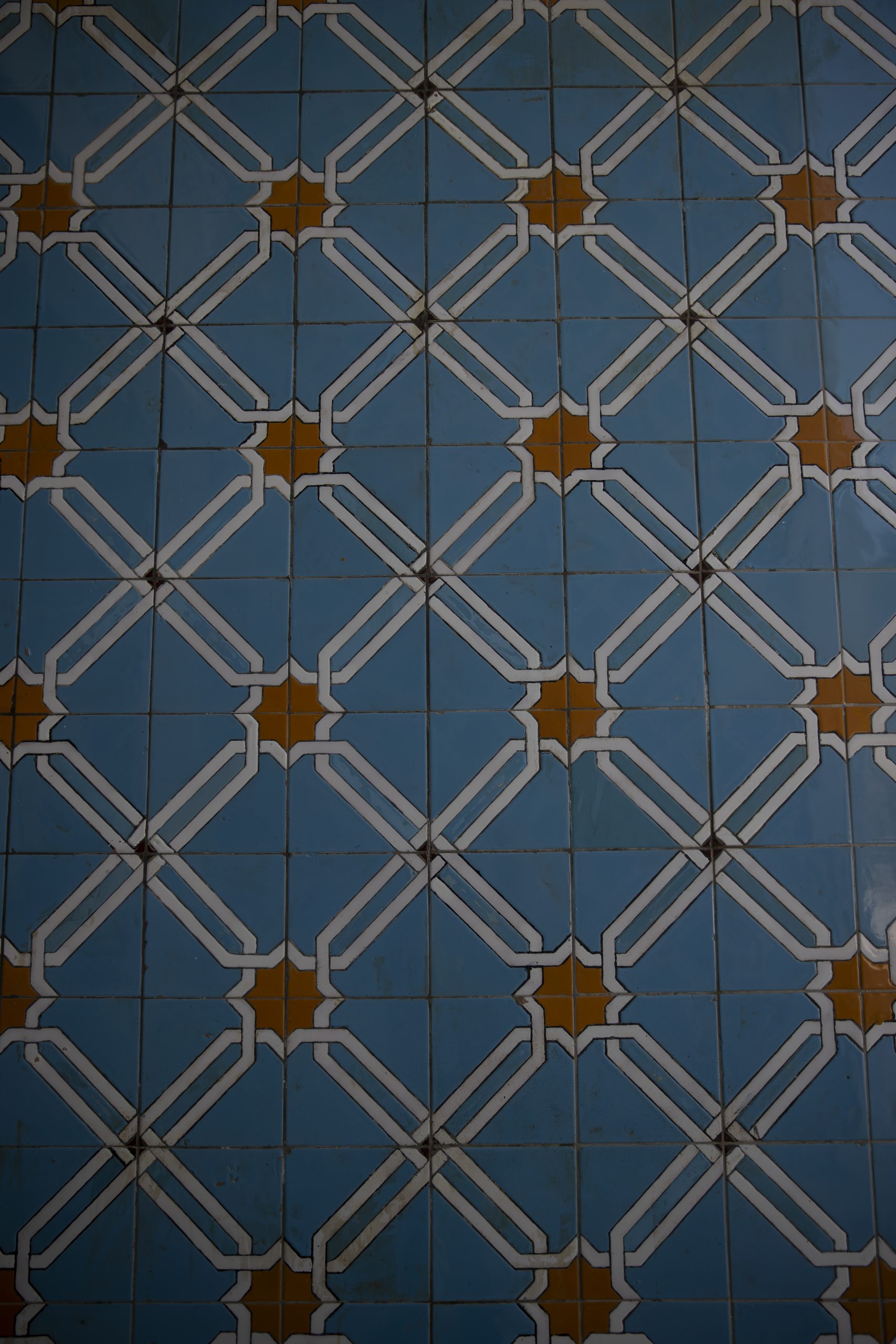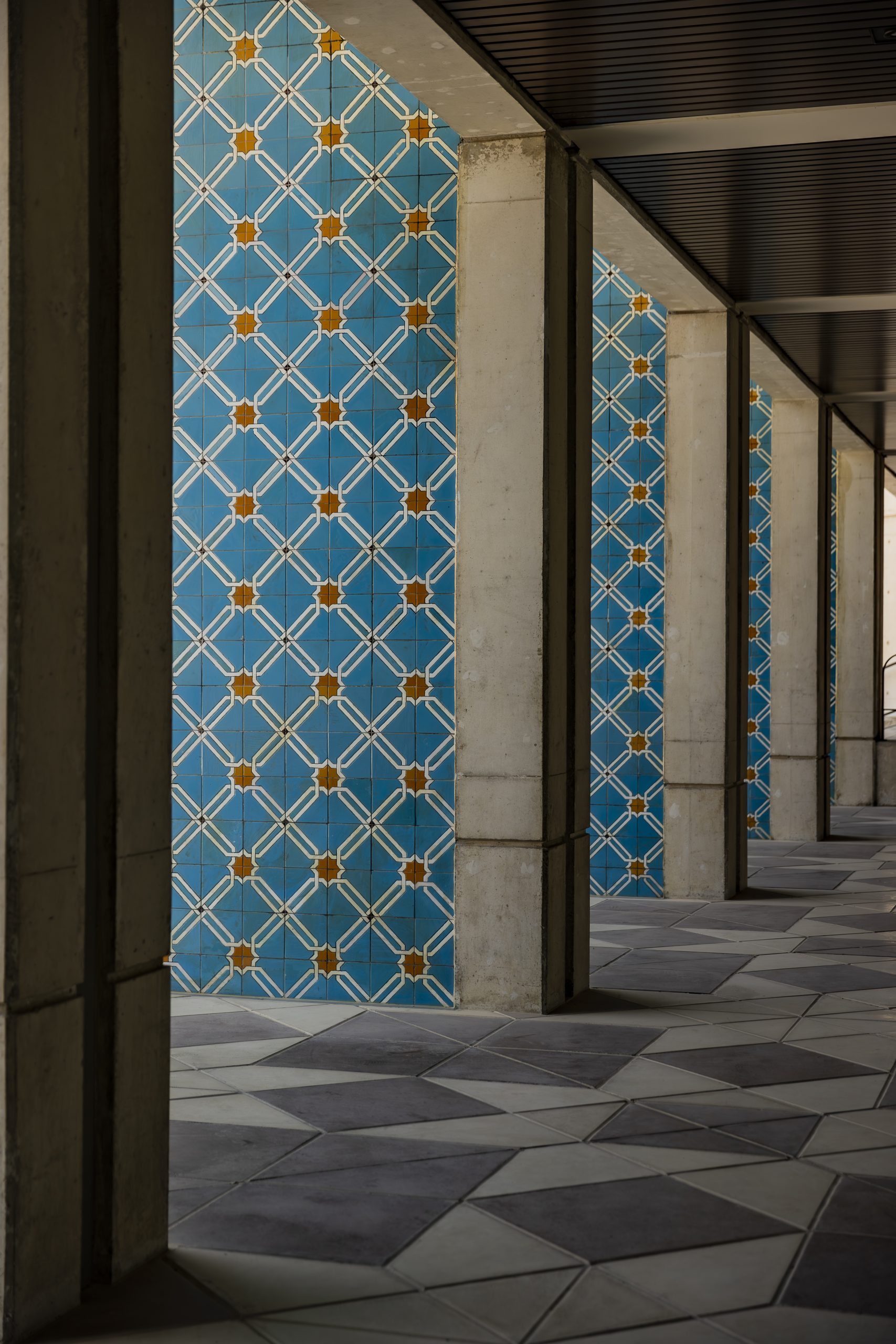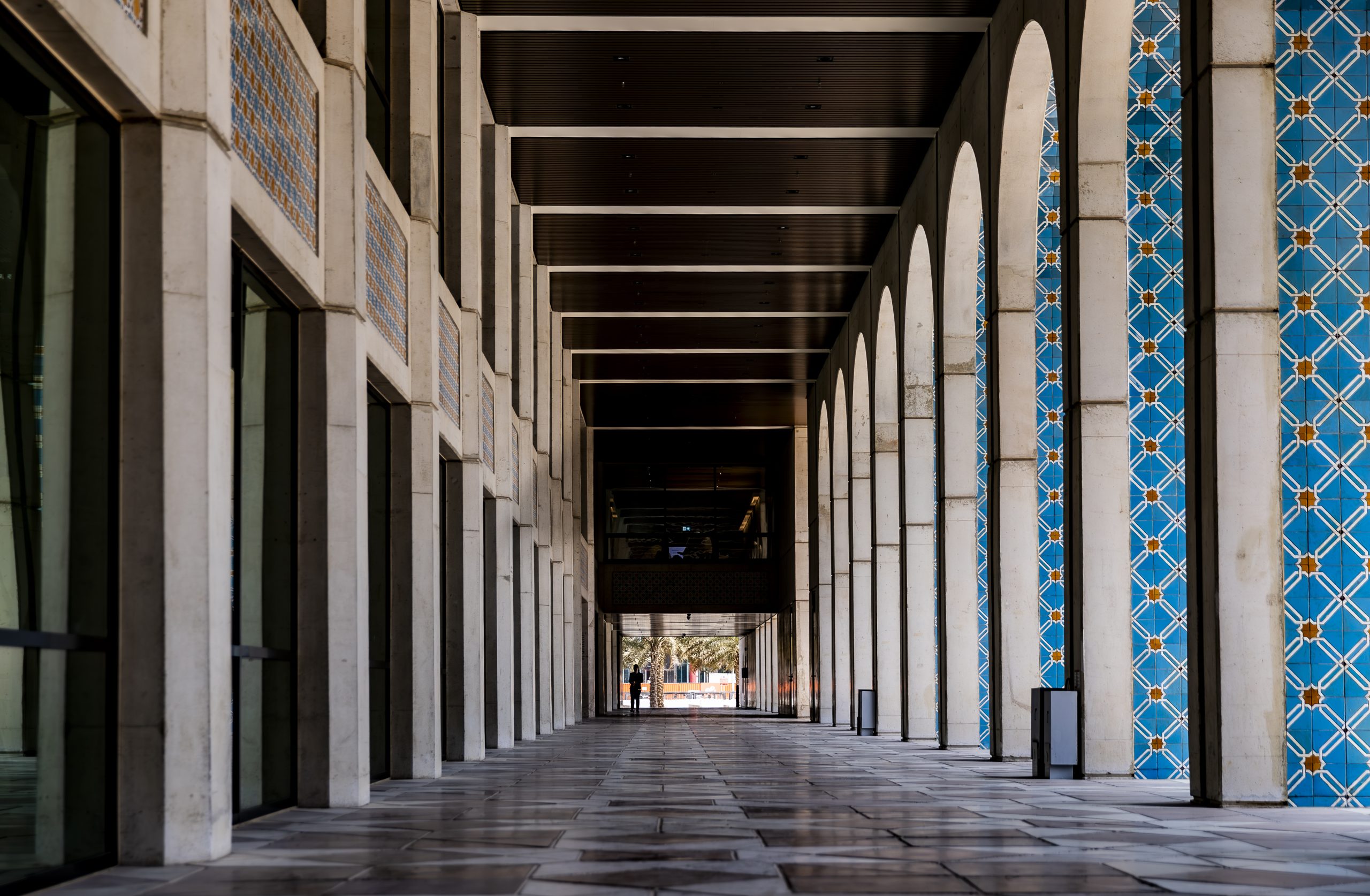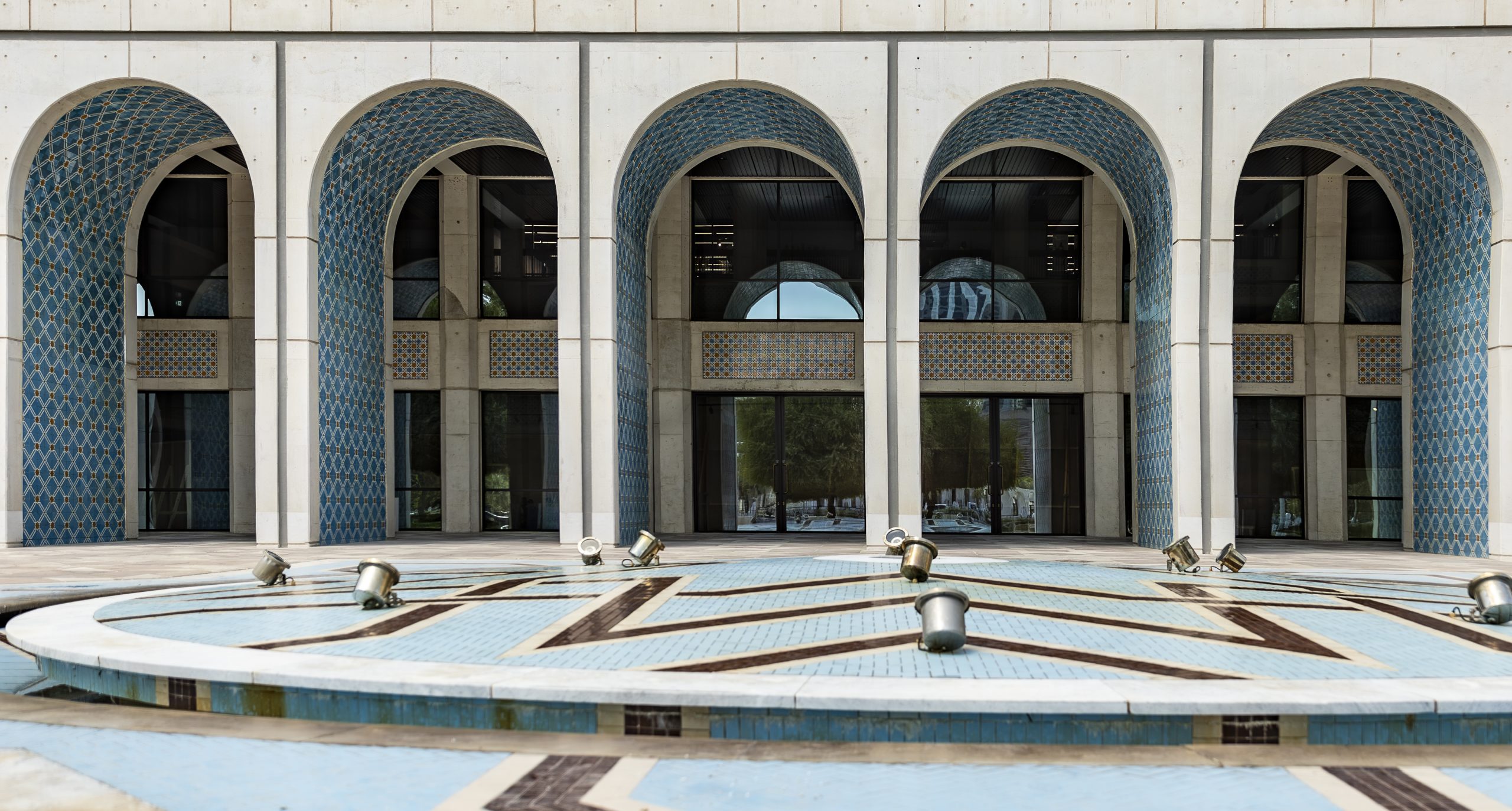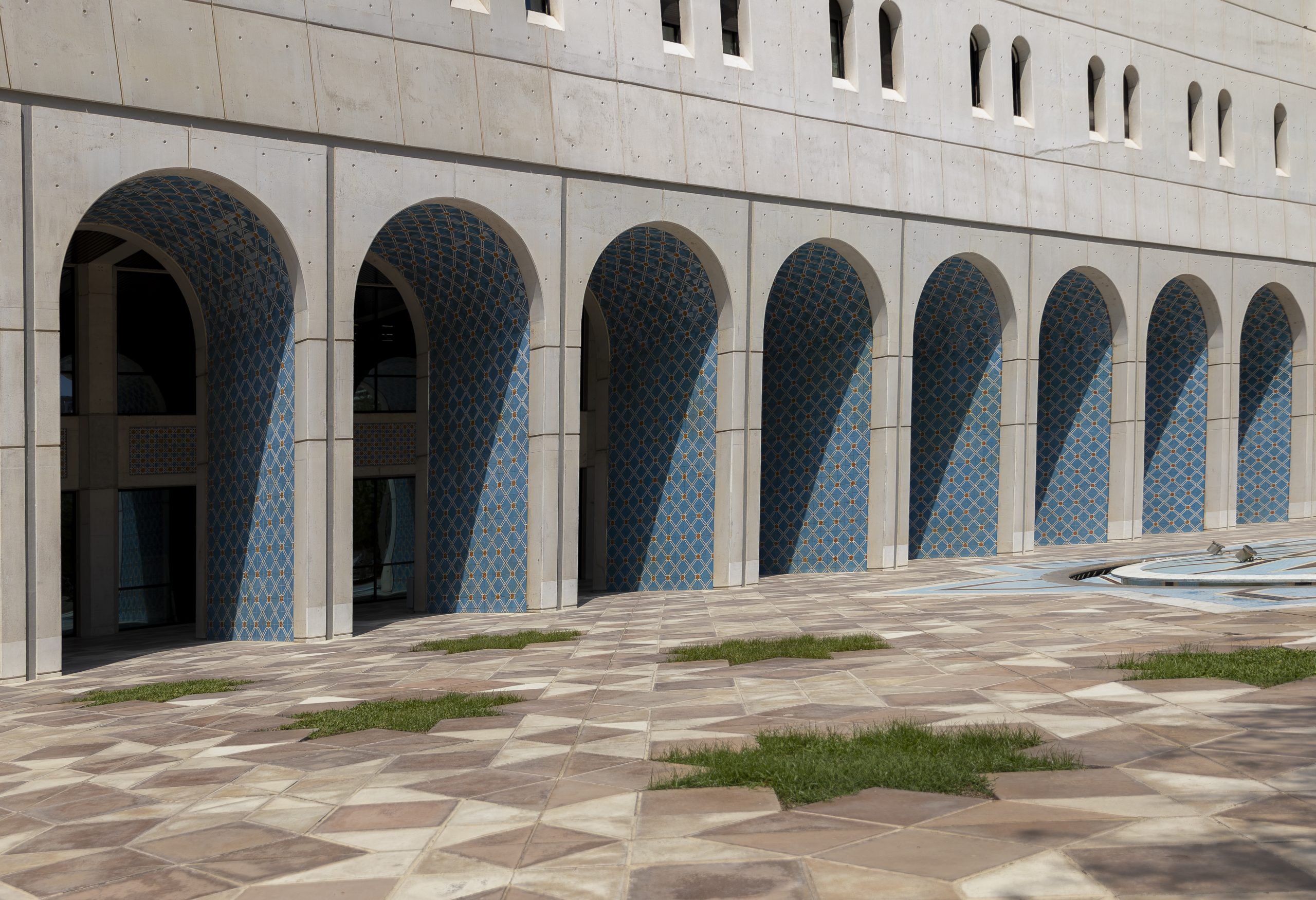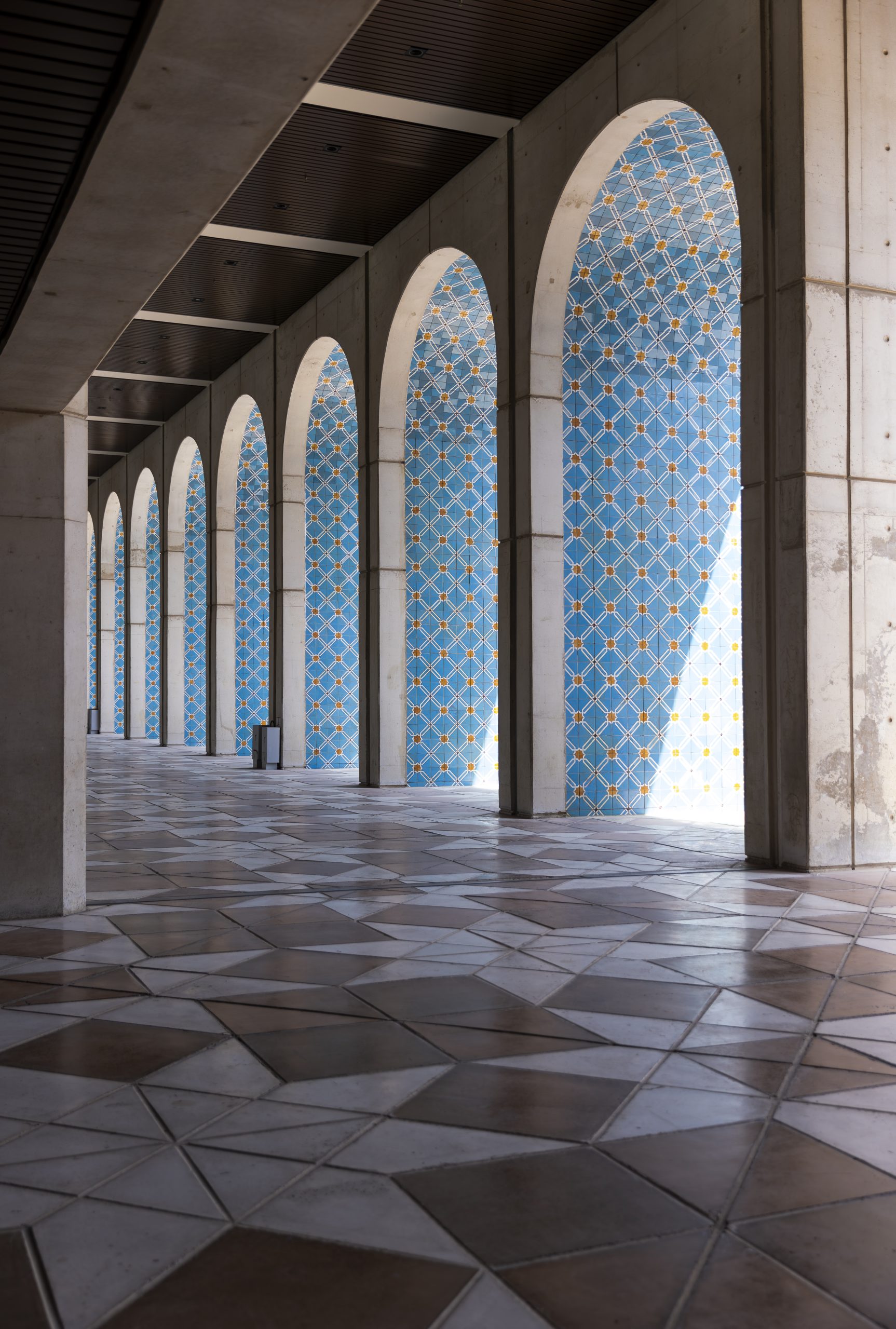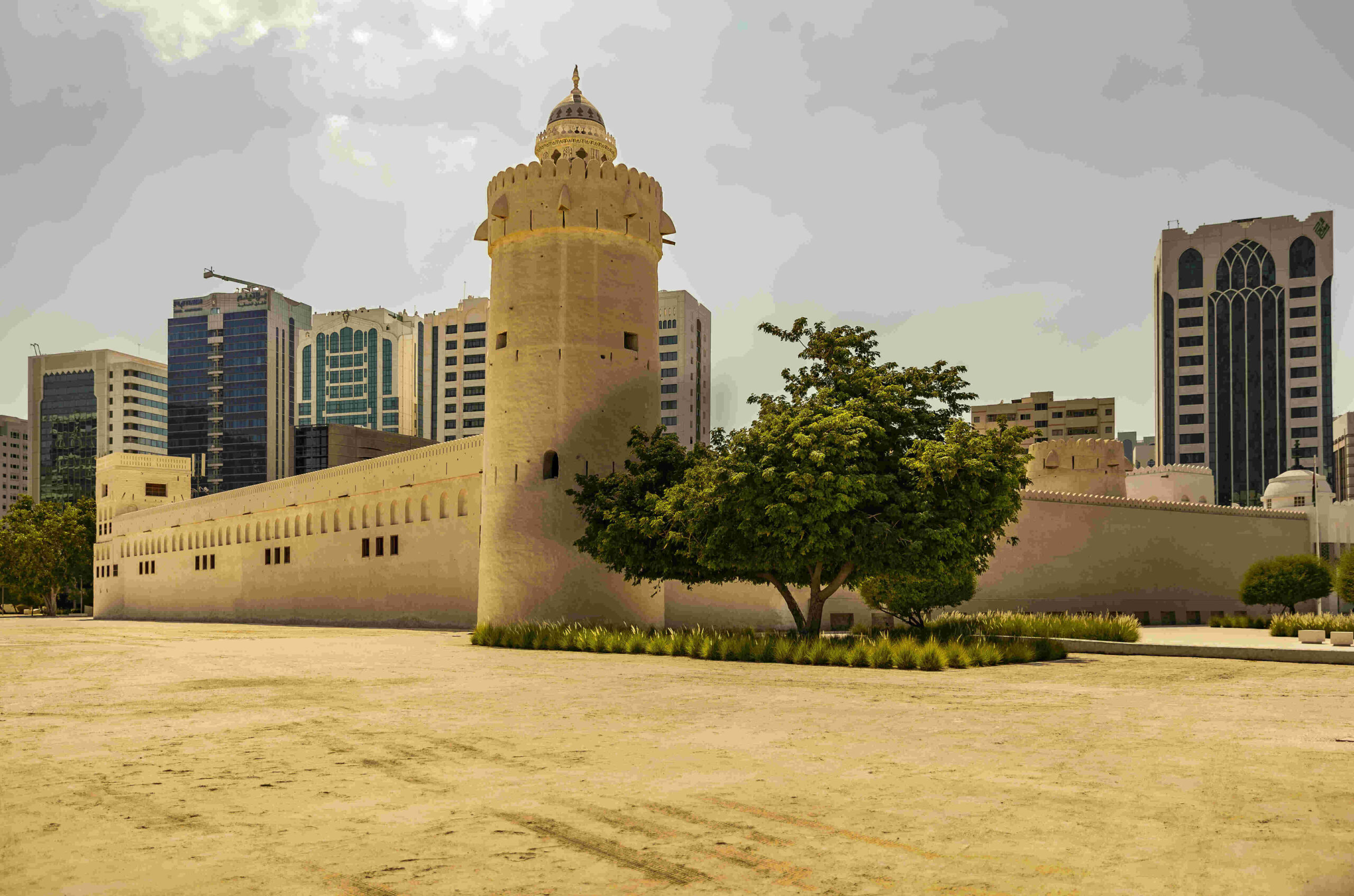
The Cultural Foundation

General Description
Adjacent to the cornerstone of the city of Abu Dhabi – Qasr Al Hosn – stands the Cultural Foundation also known as the UAE Public Library and Cultural Center which served as a National Library, a performance auditorium, and an exhibition center. An award-winning design by Walter Gropius’ firm, The Architects Collaborative TAC), the Cultural Foundation aimed to achieve the late Sheikh Zayed Bin Sultan al Nahyan’s vision to foster and nurture cultural consciousness for all citizens of the nascent UAE by celebrating local culture and highlighting its influence and exchanges internationally.
The Foundation was commissioned and directly overseen by the Late Sheikh Zayed in the early 1970s. The Design team was led by Iraqi architect Hisham N. Ashkouri of TAC and won first prize in an International Design Competition in 1976. The Construction was completed in 1982.
The political and social mission of the Cultural Foundation was skillfully translated into its design by a thoughtful and clever fusion of Modern and Islamic design philosophies and aesthetic details. While marking a shift from traditional aesthetic paradigms, the design still draws from the introverted character and weather- responsive behavior of local architecture and pays direct tribute to Qasr Al Hosn by contemporizing some of its aesthetic details. The three programmatic elements – the Learning (library), the Performing Arts (Auditorium), and the Visual Arts (Exhibition Hall and meeting rooms) – are successfully integrated by applying Modern and Islamic architectural principles which both emphasize function and geometry over the symmetry of design), thus achieved in creating a “universal space” that became a haven for inspiration.
Over time, the Cultural Foundation became a garden for intellectual growth and cross-cultural exchange locally, regionally, and internationally. It is considered one of the most important spatial and emotional anchors for the city of Abu Dhabi. Because of its historical, architectural, symbolic, and urban significance, the Cultural Foundation inscribes itself as one of the major achievements of the emerging nation of the UAE, as an important component of Abu Dhabi’s living memory, and as a fundamental stepping stone for Abu Dhabi’s cultural planning efforts.
The Cultural Foundation is the first registered modern heritage site to be rehabilitated according to international best practice, true to its original aspirations as envisioned by the late Sheikh Zayed Bin Sultan Al Nahyan.
Criteria
01
Demonstrates a meaningful association with individuals, communities or events that have made a significant contribution to the broad patterns of the UAE’s development.
02
Embodies the distinctive aesthetic, physical, or architectural attributes characteristic of the political, social, and economic trends of a particular period.
03
Demonstrates an approach to and/or a lasting influence on urban planning or architectural, urban and/or landscape design that can be characterized as significant in the UAE or globally
04
Demonstrates skill and expertise in resolving the relationships between mass, interior and exterior spaces, materials and detailing that is characteristic or an interpretation of Modern and post-Modern movements, or other recognized design movements.
05
Demonstrates the use of innovative technology to solve challenges for its time.
06
Contributes to the community’s sense of identity and enrichment of the UAE’s diversity, or is recognized as a place of collective memory for the UAE.
Statement of Significance
The Cultural Foundation, designed by The Architects Collaborative (TAC) and commissioned by Sheikh Zayed, served as a National Library, performance auditorium, and exhibition center. Its design seamlessly merged Modern and Islamic aesthetics, paying homage to local architecture while embracing contemporary elements. The foundation became a hub for cultural exchange, nurturing intellectual growth and serving as a symbol of Abu Dhabi's heritage. As the first registered modern heritage site to be rehabilitated, it stands as a testament to Sheikh Zayed's vision and remains an integral part of the UAE's cultural planning efforts.

